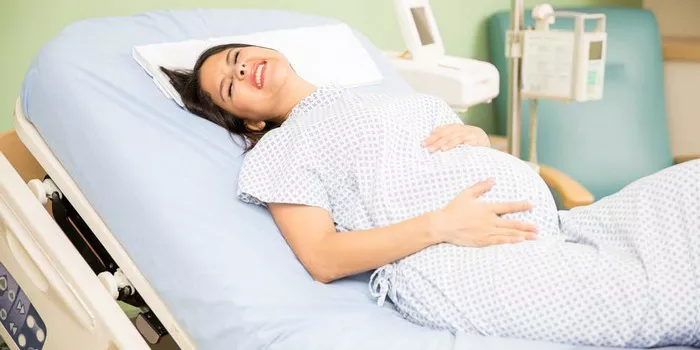Endometriosis is a medical condition where tissue similar to the lining of the uterus grows outside the uterus. It is a chronic disorder that can cause significant pain, especially during menstruation, but it can also lead to complications when trying to conceive. Many women with endometriosis wonder whether the condition will affect their ability to become pregnant or carry a pregnancy to term. Understanding how endometriosis can impact fertility and pregnancy is essential for anyone affected by the condition.
In this article, we will explore how endometriosis can influence pregnancy, the challenges it may present, and the options available to women with endometriosis who are trying to conceive. We will also discuss how proper management of endometriosis can help increase the chances of a healthy pregnancy.
Understanding Endometriosis
Before addressing its impact on pregnancy, it is important to understand what endometriosis is and how it affects the body. The endometrium is the tissue that lines the inside of the uterus. Each month during the menstrual cycle, this tissue thickens in preparation for a possible pregnancy. If pregnancy does not occur, the tissue sheds and is expelled through menstruation.
In women with endometriosis, endometrial-like tissue grows outside the uterus, typically on the ovaries, fallopian tubes, the outer surface of the uterus, or other organs within the pelvis. This tissue responds to hormonal changes in the same way as the tissue inside the uterus, but unlike the lining inside the uterus, it has no way to exit the body. As a result, the tissue can cause inflammation, scarring, and the formation of adhesions, which are bands of scar tissue that can bind organs together.
The severity of endometriosis can vary. Some women may have mild symptoms, while others experience severe pain, heavy periods, and difficulties with fertility. Endometriosis can cause a range of complications, including the impact on a woman’s ability to conceive and carry a pregnancy.
Endometriosis and Fertility
One of the most common concerns among women with endometriosis is its effect on fertility. It is estimated that approximately 30-50% of women with endometriosis experience infertility, though not all women with the condition will have trouble conceiving. Understanding the potential causes of infertility in women with endometriosis can help provide clarity on the challenges some women face.
How Endometriosis Affects the Ovaries
The ovaries are the organs responsible for producing eggs, and they are often one of the main sites affected by endometriosis. When endometrial tissue grows on the ovaries, it can lead to the formation of endometriomas, which are cysts filled with old blood. These cysts can affect the function of the ovaries by interfering with the release of eggs and disrupting the normal menstrual cycle.
Endometriomas can also decrease the quality and quantity of a woman’s eggs. If the ovaries are significantly affected by endometriosis, it may reduce the chances of successful conception, either naturally or with assisted reproductive technologies like in vitro fertilization (IVF).
Impact on the Fallopian Tubes
The fallopian tubes are responsible for carrying eggs from the ovaries to the uterus. When endometrial tissue grows on or near the fallopian tubes, it can lead to blockages or adhesions that prevent the egg from reaching the uterus. Blocked fallopian tubes can prevent fertilization from occurring, even if ovulation is normal.
In addition to blockages, endometriosis-related inflammation in the fallopian tubes can affect their ability to transport eggs and sperm, which is crucial for natural conception.
Effect on the Uterus and Endometrial Lining
Endometriosis can also affect the uterus itself. When endometrial-like tissue grows on the outer surface of the uterus, it can cause adhesions between the uterus and other pelvic organs. These adhesions can distort the normal anatomy of the reproductive organs, making it more difficult for the egg to implant in the uterus.
In addition, women with endometriosis may have an abnormal or less receptive uterine lining, which can make it harder for the fertilized egg to implant and grow. Even if a woman with endometriosis is able to conceive, it may increase the risk of miscarriage or early pregnancy loss due to a less-than-ideal uterine environment.
Does Endometriosis Affect Pregnancy Outcomes?
While endometriosis can make it more difficult to become pregnant, it does not necessarily prevent pregnancy altogether. However, women with endometriosis may face certain challenges once they become pregnant.
Increased Risk of Miscarriage
Studies have shown that women with endometriosis may have a slightly higher risk of miscarriage, particularly if the condition is severe. The exact reason for this is not entirely clear, but it is thought that the inflammation and immune system changes associated with endometriosis may contribute to early pregnancy loss. Additionally, the presence of endometriomas or adhesions may interfere with the implantation process, increasing the risk of miscarriage.
Preterm Birth and Complications
Women with endometriosis may also face a slightly higher risk of preterm birth. Preterm birth occurs when labor begins before 37 weeks of pregnancy. The increased risk may be related to the chronic inflammation and scarring that can result from endometriosis. Furthermore, women with severe endometriosis or those with a history of pelvic surgeries (such as the removal of endometriomas) may be more likely to experience complications during pregnancy, such as placental problems or low birth weight.
Ectopic Pregnancy
Women with endometriosis are at a higher risk of ectopic pregnancy, a condition where a fertilized egg implants outside the uterus, often in the fallopian tube. This can be life-threatening and requires immediate medical attention. The risk of ectopic pregnancy is higher in women with endometriosis because adhesions and scarring can prevent the egg from traveling to the uterus, causing it to implant in the fallopian tubes or elsewhere in the pelvis.
Increased Risk of Cesarean Delivery
Because endometriosis can cause structural changes to the pelvic organs, women with the condition may be more likely to require a cesarean section (C-section) delivery. This is particularly true for women who have had surgeries to remove endometrial growths or cysts. A C-section may be recommended to avoid complications during delivery and ensure the safety of both the mother and the baby.
Managing Endometriosis for Pregnancy
While endometriosis can complicate pregnancy, there are steps that women with the condition can take to improve their chances of conception and have a healthy pregnancy. Proper management and medical intervention can make a significant difference.
Fertility Treatment Options
For women with endometriosis who are struggling to conceive, there are several fertility treatment options available. These include:
- Laparoscopic surgery: In some cases, removing endometrial tissue, adhesions, or endometriomas through surgery may improve fertility. Laparoscopy is a minimally invasive surgical procedure that allows the doctor to view the pelvic organs and remove the growths. While surgery can improve fertility in some women, it is not always a guaranteed solution.
- In vitro fertilization (IVF): IVF is a commonly used assisted reproductive technology for women with endometriosis. IVF involves stimulating the ovaries to produce multiple eggs, retrieving the eggs, fertilizing them in the lab, and then implanting the embryos in the uterus. IVF can be effective for women with endometriosis who have difficulty conceiving naturally, particularly when there are issues with the fallopian tubes or ovaries.
- Ovarian reserve assessment: Doctors may also assess a woman’s ovarian reserve, or the number and quality of her eggs, to determine the best course of action for conception. If the ovarian reserve is low, egg donation may be considered as an option.
Managing Symptoms During Pregnancy
For women with endometriosis who become pregnant, managing symptoms during pregnancy is key to a healthy outcome. Pain management is essential, as some women may experience pelvic pain or discomfort during pregnancy due to the effects of endometriosis. Doctors may recommend pain relief methods, including lifestyle changes, physical therapy, or medications that are safe during pregnancy.
Close Monitoring and Support
Pregnant women with endometriosis may require closer monitoring throughout their pregnancy. Regular checkups and ultrasounds can help detect any potential complications early. Healthcare providers may monitor the pregnancy for signs of preterm labor, placenta issues, or other complications that are more common in women with endometriosis. Having a support system in place, including a trusted obstetrician or gynecologist, is crucial for managing any concerns that may arise.
Conclusion
Endometriosis can present challenges for women trying to conceive and those carrying a pregnancy. It can impact fertility by affecting the ovaries, fallopian tubes, and uterus, making it more difficult for women with the condition to get pregnant. Additionally, women with endometriosis may face an increased risk of miscarriage, preterm birth, and other complications during pregnancy.
However, with proper treatment, including surgery, fertility assistance, and careful management during pregnancy, many women with endometriosis can successfully conceive and have healthy pregnancies. Working with a healthcare provider who understands the complexities of endometriosis and fertility is key to improving outcomes and providing the best possible care. Women with endometriosis who wish to become pregnant should seek support and explore their options with their doctor to maximize their chances of a successful pregnancy.
Related topics:
How Does Endometriosis Affect Bowel Movements?





















